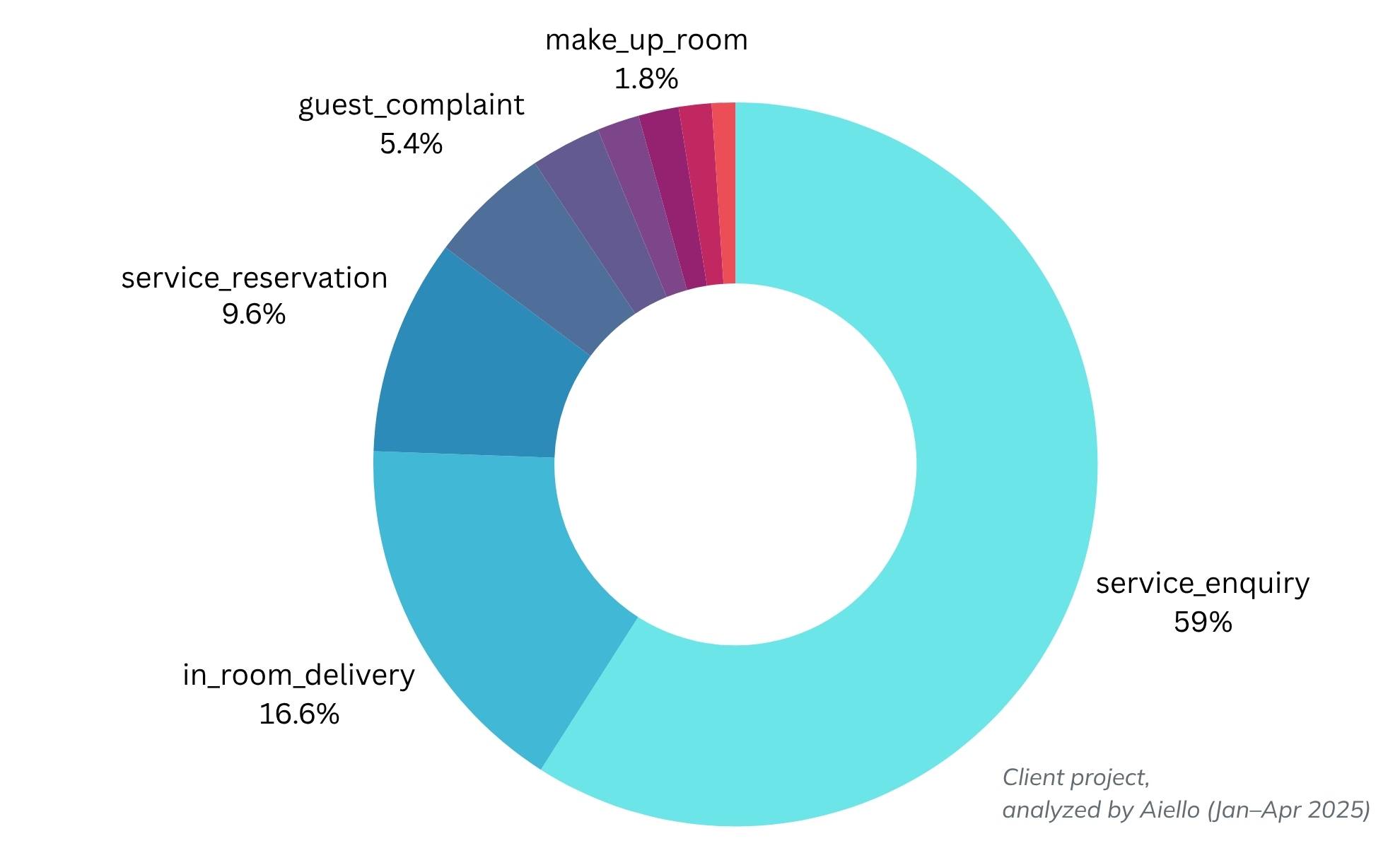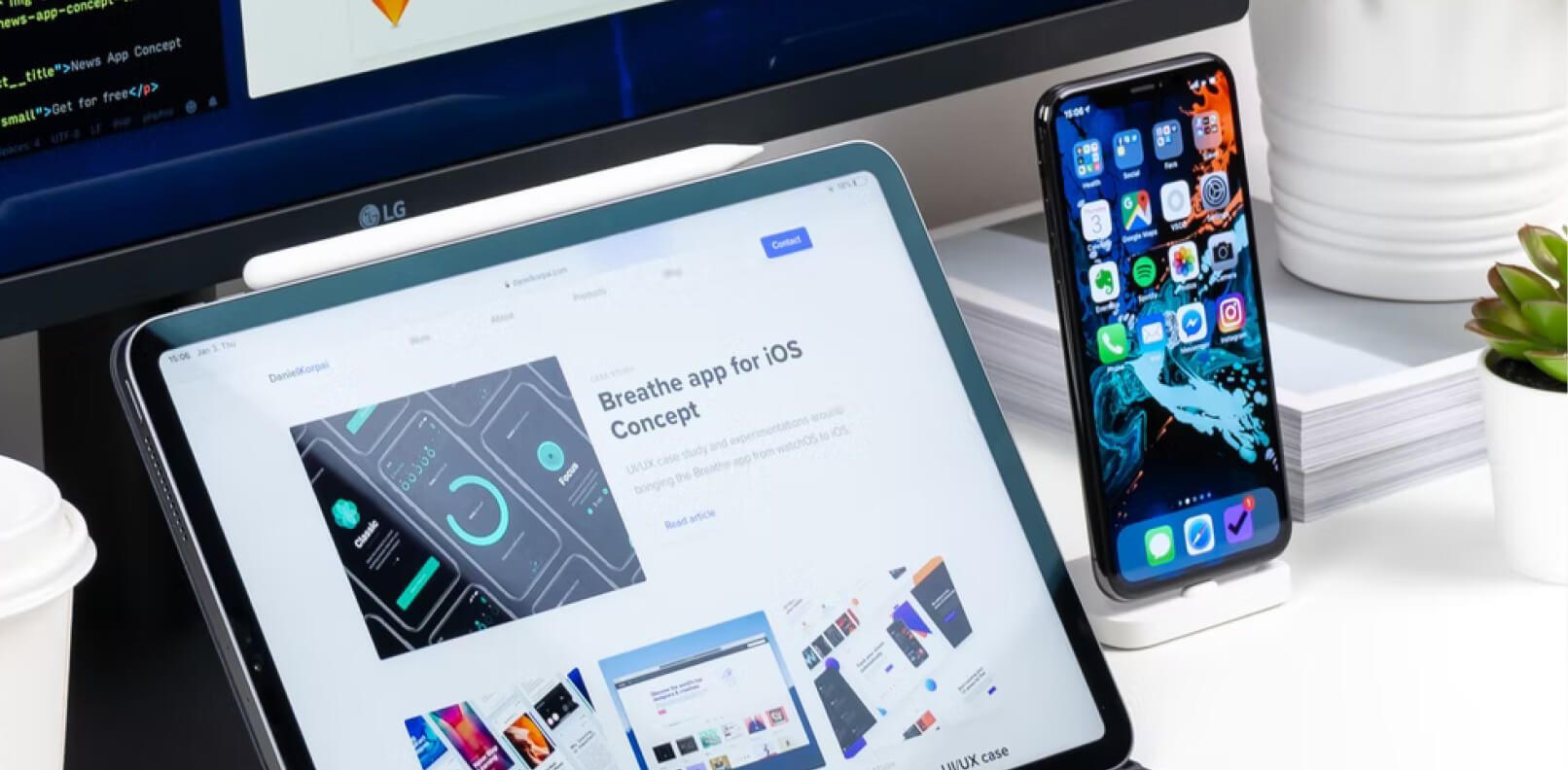The phones never stop—but not every ring needs a human.
Wyndham Hotels & Resorts receives thousands of daily calls from guests who simply want to confirm their reservations.
“It’s a remarkable number of people who call to confirm”, “Thousands of calls a day from people who just want to make sure their reservations are still there.”, according to Josh Dow, VP, hotel technology strategy & services. [source]
“Many organizations are challenged by agent staff shortages and the need to curtail labor expenses, which can represent up to 95% of contact center costs. Conversational AI makes agents more efficient and effective, while also improving the customer experience.” said Daniel O’Connell, VP analyst at Gartner. [source]
What we saw in a 5-star group (and what you can expect)
We recently sat down with a five-star hotel chain to map their daily call flow. They average ~200 calls a day, and they live by a simple rule: never let a call ring more than three times.
You know the pressure that puts on the front desk—every minute, every ring, matters.

When we tagged each call by intent, a clear pattern emerged:
Service inquiries — 59%
Hours, facilities, room types, available amenities. These are factual and repeatable—perfect for A.I.
Delivery requests — 16.6%
“Extra towels, water, baby cot.” These can be auto-ticketed and tracked end-to-end.
Make-up room — 1.8%
Straightforward housekeeping requests that AI can log and dispatch.
Add those up and ~77% of calls are routine—about 3 out of 4 can be handled by the AI agent before a human ever picks up. To ease the load, we brought in an AI Agent for their call center—it answers the routine questions instantly and hands over the calls that truly need a human touch, like complaints or special requests.
Complaints — 5.31%, mostly facility issues.
These need careful human handling—empathy, context, and often on-site coordination. The AI’s job here is to recognize the emotion fast, capture details cleanly, and warm-transfer to the right staff with full context.
Given that ~75% of calls can be automated, success comes down to getting a few basics right. Start with these five
How to Roll It Out—The Five Keys
1) Build a living knowledge base (your “single source of truth”)
If you do one thing right, make it this. Your AI can only answer as well as your KB is written.
- Start with what you already have: past call logs, FAQs, SOPs, rate/fee policies, amenity rules, directions/transport, seasonal notes. De-identify anything with PII.
- Write like guests speak: add synonyms and local phrases (e.g., “crib = baby cot”, “elevator = lift”). Short Q→A beats long prose.
- Structure matters: page per topic, clear titles, validity dates, and owners. Add “exceptions” (e.g., VIP, blackout dates) so answers don’t over-promise.
- Multilingual from day one: Make sure the most-spoken languages are mapped to the same intent.
- RAG before fine-tune: use RAG(retrieval-augmented generation) so updates go live instantly (new pool hours, fees, promos). Lower the risk of “making things up.” Fine-tune later for style/edge cases.
- Governance: assign an editor, keep a change log, and review weekly in the pilot.
Hotel example
You change late-checkout policy or breakfast time → update the KB (RAG will read the new answer immediately).
You want the bot to sound more“calm & premium,”or always confirm room number before creating a towel ticket → fine-tune after the KB is stable.
2) Match the voice to your brand (friendly, not “cost-cutting”)
Guests shouldn’t feel you swapped people for a robot to save pennies.
- Tone guide: decide on 3 traits (e.g., “warm, concise, confident”), banned phrases, and how to apologize/thank.
- Short scripts that feel human: “Hi, I’m your hotel’s assistant—I can help right away or get you to a person.”
- Escalation etiquette: clear opt-out (“Operator, please”), and warm transfers with context so humans don’t re-ask basics.
3) Make it fast (first word in ~2 seconds)
Speed is experience. Aim for the first response within 2s.
- What happens under the hood:
Voice activity detection → ASR (speech-to-text) → intent/KB lookup → TTS (reply) → optional ticket creation or routing.
- How to shave latency:
- Keep prompts concise; cache top FAQs.
- Pre-warm models; keep sessions “hot.”
- Tune end pointing so the bot doesn’t over-wait after you finish a sentence.
- Ensure clean audio paths on your PBX/SIP.
- Trade-offs: more safety checks = slower replies; ultra-fast = riskier wording. Find your sweet spot in pilot.
4) Prove ROI with the right metrics (not just “it sounds cool”)
Pick numbers you will defend in a quarterly review.
- Coverage: % of calls the AI resolves without a human (target 60–75%, aim for 70%).
- Time saved: (AI-handled calls × avg human handle time).
- Wait time / Abandon rate: should drop as AI answers instantly.
- FCR / CSAT (or voice NPS): exceptions routed fast, not dumped.
- Headcount hours reallocated: shifts moved from phones to lobby care.
- Simple goal framing: “We’ll let AI handle ~70% of routine calls; humans focus on VIP/complex.”
Sample quick math:
200 calls/day × 75% × 90s per call = 3.75 hrs/day saved → ~112.5 hrs/month → ~171 eight-hour shifts/year redirected to guest service.
5) Retrain and refine (this is a program, not a project)
AI that doesn’t learn will drift.
- Weekly loop: review 20–50 escalations, add missing FAQs, tighten wording, update blocked topics.
- Seasonality: pre-load holiday events, pool maintenance, restaurant pop-ups.
- Quality checks: spot-audit transcripts, track false recognitions, and A/B test replies.
- People feedback: let agents flag bad answers with one click; make fixes visible in the change log.
- Quarterly tune-up: refresh intents, retire stale policies, re-evaluate guardrails and brand tone.
Pro tips to avoid common pitfalls
- Don’t dump a 50-page SOP into the bot—atomize it into Q&As.
- Don’t launch without an easy escape to a human.
- Don’t hide the bot—introduce it honestly and let guests choose.
- Don’t forget multilingual parity; mixed-language calls are common.
Plan for your hotel for the next 5 years.[Let’s Chat]



